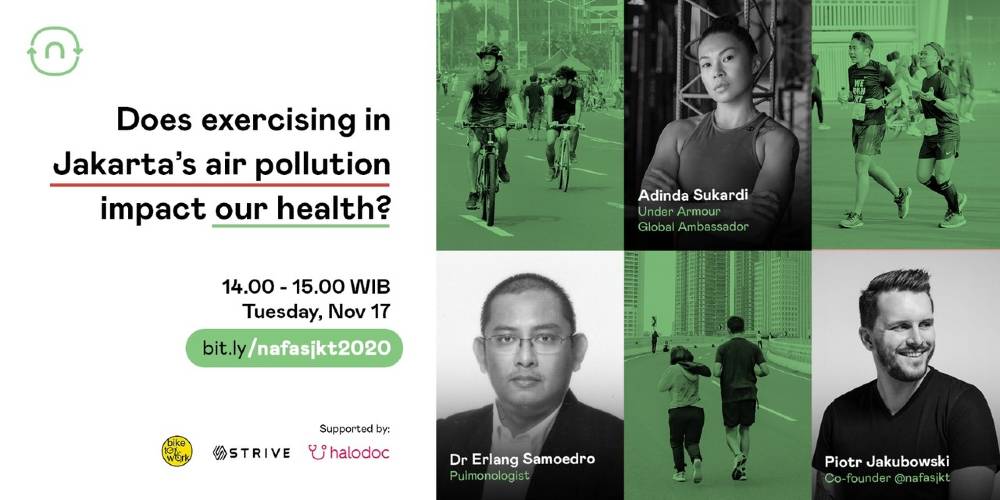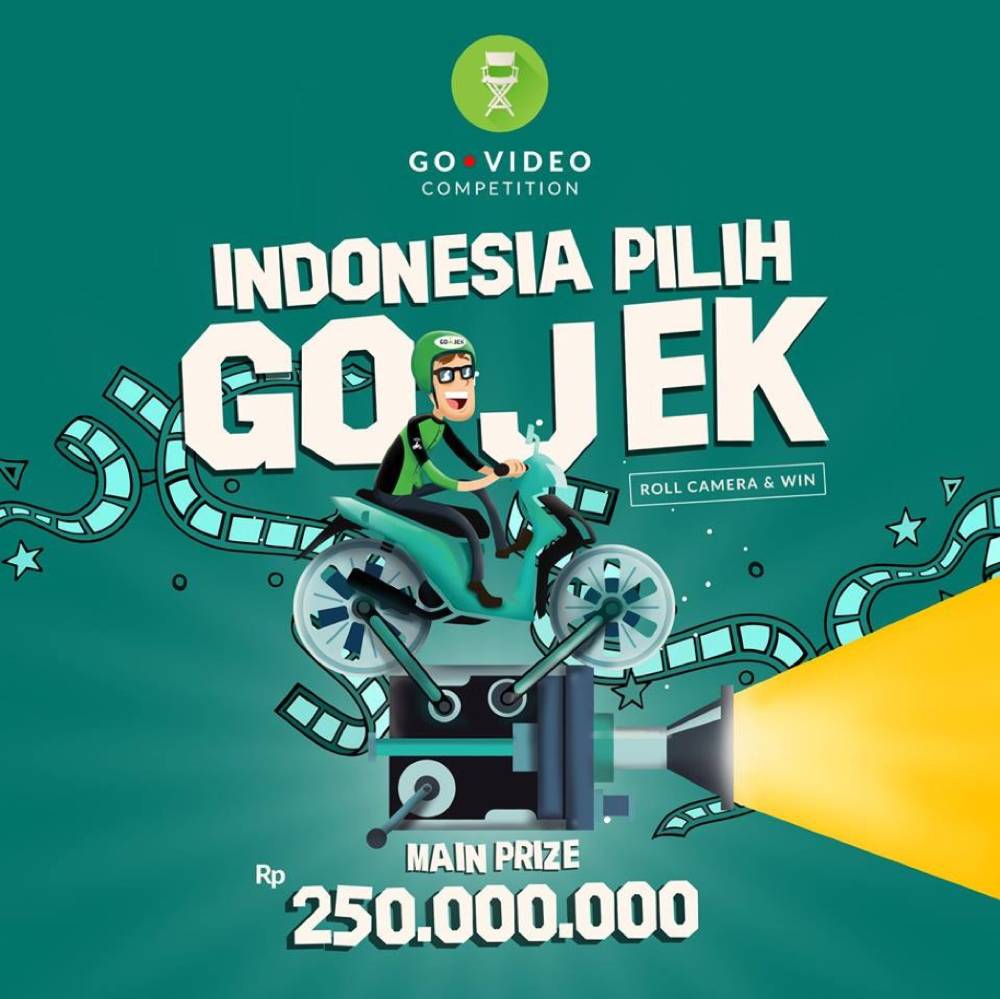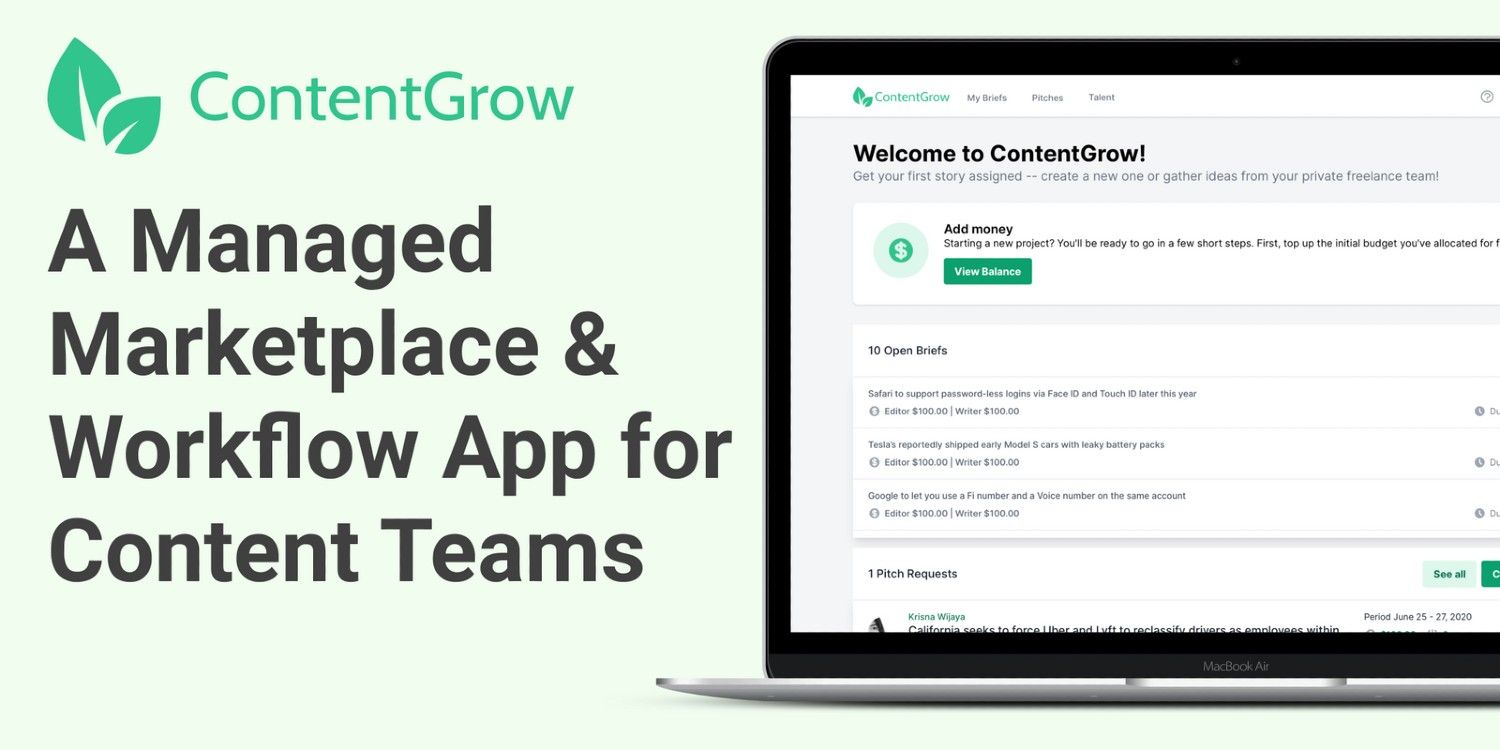Ex-Gojek CMO Piotr Jakubowski advises content marketers on common pitfalls
Piotr Jakubowski believes content marketing isn’t about quantity or gimmicks, but about truly valuable content for the right target audience.

One morning, the Nafas app on my phone sent a notification saying that the air quality in my neighborhood was at a good level. True enough, I was able to see the mountain from my apartment window — a rare sight for the normally polluted city of Jakarta. I thought to myself that the app’s concept was interesting, but it’s also likely a hard thing to market.
“The air quality space is a completely new thing to think about in Indonesia,” says Piotr Jakubowski, co-founder and chief growth officer at Nafas. “You can’t see air quality, and if you can, then it’s far worse that it should be.”
Launched in January 2020, Indonesia-based Nafas provides real-time air quality index information in Jakarta. The company claims to operate Jakarta’s largest network of air quality sensors, reaching close to 70 units at the time of writing.
Piotr is a familiar name among marketing veterans in Southeast Asia. He was the CMO of super app Gojek from 2016 to 2018, where he helped build the brand into a household name. During his two and a half year stint at the now decacorn, Gojek saw staggering business growth from 5 million monthly orders to more than 100 million.
Piotr shares three common content marketing pitfalls that practitioners today should try to avoid.
Pitfall #1: targeting “everyone” from the get go
Piotr believes that marketers should prioritize targeting a specific group of people rather than a broad audience, especially when the company is still at an early stage like Nafas. He explains, “Regardless of what you create, there is a community there — people who are either highly obsessed with the category or with the brand itself.”
The founder stresses the importance of understanding a brand’s early core audience. Even before discussing budget and strategy, marketers need to figure out who the core users are and then try to map their idiosyncratic behaviors.

He mentions that big companies first need to do things that don’t scale to reach their first 1,000 users. This will help marketers figure out a brand’s ideal target community and potential future champions. Then, marketers need to continuously add value to the lives of those in this community.
“Air quality affects everybody, but our target market at Nafas isn’t everybody. We have to start somewhere,” Piotr explains. According to him, Nafas provides the biggest value to those who spend a lot of time outdoors, and eventually figured out that its early core users are in fact athletes and people who exercise regularly.
It’s a similar story with other tech companies. Facebook and Tinder, for example, started out by focusing on university students before offering access to the public. Likewise, Lyft and Uber targeted startup offices as their early core users.
Pitfall #2: publishing a large quantity of content with very little value
Content marketing as a discipline is fundamentally misunderstood. Piotr sees many people creating a bunch of different types of content and then trying to just see what delivers immediate results (e.g. just throw spaghetti at the wall and see what sticks). Some marketers even publish content just for the sake of routine.
A good content marketing strategy is about creating content that truly adds value to the customer’s life. “If it looks like it’s written by someone who does very basic research on Google, then you’re not really adding value to the audience’s lives,” says Piotr.
For this reason, Nafas takes its content section seriously. The team hired an experienced journalist to write an in-depth report about air quality in Jakarta. He fondly remembered that some people thought the initiative was crazy, as no one was likely to read a 93-page report.

“On the one hand, sure it’s crazy. On another, the report was geared toward athletes and people who take a great deal of data into consideration when trying to become a better athlete. So access to data falls into the habits that they already have. We’re not introducing anything completely new to them,” explains Piotr.
Nafas is on a mission to raise awareness around air quality in the archipelago. “In order for our mission around education to be successful, we need to publish data. But data without a story or context is meaningless,” he adds.
The report – titled Does Exercising in Jakarta’s Air Pollution Impact Our Health? – discovered one interesting piece of information. It turns out that Jakarta’s worst air quality happens between 4 am to 9 am. This is counterintuitive, as people in the city tend to exercise early in the morning to avoid pollution. The Nafas team then unpacked the issue further by combining other research papers about the health risks of exercising in highly polluted areas.
If you’re curious about the best time to exercise in Jakarta, it’s from 4 pm to 6 pm.

Nafas launched the report via an online webinar. The team invited a prominent local athlete to help attract interest from the app’s target community.
The online launch helped the team garner media coverage and made sure the story reached the right target group. But the report’s biggest success came a week later via Twitter. Piotr broke down the content into digestible tweets, and they went on to receive more than 1,600 retweets and a few hundred thousand impressions. Because of this, the app’s user growth tripled over the course of a single week.
Last week we launched a report called “Does exercising in Jakarta’s air pollution impact our health?” which includes a deep-dive into the air quality in Jabodetabek from 4-9AM when most people exercise.
Here’s some of the things we found
👇👇👇👇November 23, 2020
See: 29 smart B2B content marketing examples and success stories
Pitfall #3: underestimating the power of social impact
Piotr believes it’s important to build a brand that stands for something. Looking back at his time with Gojek in 2016, the team was establishing itself as the people’s champion in Indonesia.
“There’s a very fine line between ‘Pick me because I’m Indonesian,’ versus ‘Hey, I’m dedicated to the future of this country,’” he explains. “Today’s consumers want quality. They need to have a strong reason to buy or join your team apart from the fact that you’re from this country.”
According to a recent Deloitte report, customers care about a company’s social mission. 19% of respondents say that it has strongly influenced their purchasing decisions. In Gojek’s case, consumers aren’t just buying the firm’s product, but also helping the app do something bigger for the nation.
But Piotr warns that marketing social impact is also a tricky thing to do. In a highly globalized world, consumers can filter through the bullshit a lot faster. As such, it’s all the more important to create real and authentic content.

This is why Gojek focused on producing a variety of patriotic content during its early years. It was not as simple as showcasing that the brand was a local company. Piotr’s content marketing efforts were focused on how Gojek was opening new economic opportunities for all kinds of people, be it drivers, store owners, customers, and those in cities outside of Jakarta. The key message then was (and still is today): Gojek is a business that has the interest of Indonesian people at its core.
Netflix as a great content marketing example

Piotr mentions his favorite current content marketing example: Netflix’s Formula 1: Drive to Survive. It’s an eight-hour documentary series about the ins and outs of F1. According to Piotr, it’s basically eight hours of F1 advertising.
But after watching it, he learned about the intricacies of all the teams, not just Ferrari and Mercedes. He got to understand that it’s not all about the race on F1, it’s also about the emotions. He got to learn about the drivers, who they are, what’s important to them, and more. After watching the series, Piotr says that he’s now able to see a race beyond just F1 drivers Lewis Hamilton and Sebastian Vettel.
Beyond just entertainment, Netflix also has a good record of influencing its viewers’ purchase decisions. The company’s recent hit show The Queen’s Gambit was able to revitalize an old sport. After just three weeks of its premiere, sales of chess sets and books rose by 87% and 603% respectively in the US.
Piotr reiterates the point that content marketing is storytelling in its purest form. It’s important for marketers to leverage format and channels when executing their strategies. The format could be anything and it doesn’t have to be limited to blog posts or YouTube videos.
Meaningful content marketing adds value to people’s lives. Piotr says that after consuming your content, people should have a better understanding of who you are, what you stand for, and why they should care about you.
Save time and money when producing high-quality content. ContentGrow helps brands and publishers work with perfectly matched freelance writers and journalists at preferred rates. Fill out the form below to get your own shortlist of talent or visit the site to get started.



